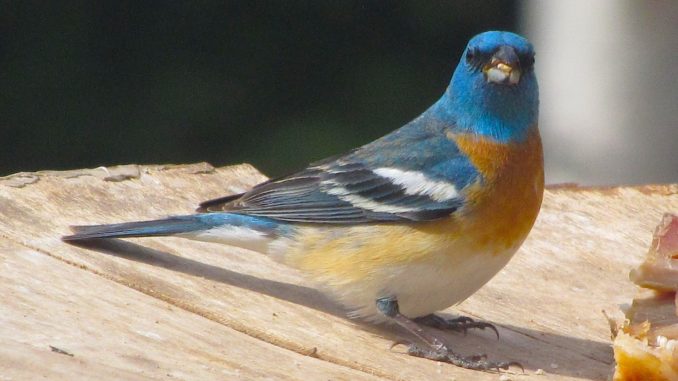
Grants and Matching Contributions Will Benefit Hundreds of Bird Species Across Twenty Countries
Twenty years ago, the passage of the Neotropical Migratory Bird Conservation Act (NMBCA) spurred new opportunities for innovation in bird conservation that continue today. This year, birds and people throughout the Americas will benefit from a new round of projects under the act, totaling more than $25 million in federal grants and matching funds.
The NMBCA provides critical support each year for bird conservation and research throughout the Western Hemisphere. It is the only source of federal funding solely dedicated to the conservation of our shared migratory bird heritage. This year, more than $4.8 million in federal funds will be matched by more than $21 million in partner contributions going to 34 collaborative conservation projects in 20 countries across the Americas.
“Birds are enjoyed by tens of millions of Americans and they play an important role in maintaining our environmental health,” said Aurelia Skipwith, Director of the U.S. Fish and Wildlife Service. “President Trump and Secretary Bernhardt have prioritized public access and stimulating economic growth, and birdwatching is a growing pastime that contributes billions of dollars to the national economy. The Neotropical Migratory Bird Conservation Act supports the conservation of migratory birds and benefits Americans.”
There are 386 species of neotropical migratory birds that migrate to and from and through the United States each year, including songbirds, shorebirds and birds of prey. In addition to their role as pollinators, seed dispersers and pest controllers, they also provide early warnings of environmental contamination.
The NMBCA program is specifically designed to send at least 75% of its funding to projects in Latin America and the Caribbean, where habitat loss and other threats to migratory birds that spend part of their lives in the United States are significant and conservation funding is scarce. Because the program works throughout the Western Hemisphere, it is able to support the full life-cycle needs of the birds. For instance, the NMBCA funds work for the Canada warbler and wood thrush on their breeding grounds as well as key stopover and wintering sites in Central America and South America.
Since 2002, the NMBCA has provided $75 million in grants to support over 600 projects in 36 countries. These projects have positively affected 5 million acres of bird habitat and spurred partnerships on multiple levels contributing an additional $286 million. This year’s project highlights include:
Saving Mar Chiquita Wetlands (Argentina)
$200,000 to protect 13,000 acres in the Mar Chiquita area of central Argentina through acquisition, development of management practices and community engagement. American golden plover, lesser yellowlegs and pectoral sandpiper are among the birds that will benefit.
Elk Mountain Ranch Conservation Easement (United States)
$100,000 to permanently protect over 600 acres of ranchlands in northwest Colorado, an area where over 50 species of neotropical migrants have been reported.
Integrating Shorebirds Conservation and Shrimp Farming (Honduras and Nicaragua)
$39,149 to foster bird friendly shrimp farming practices in the Bay of Fonseca. Birds that will benefit include American oystercatcher, ruddy turnstone and red knot.
“Birds were my first window into the natural world and that led to a lifetime of working to conserve our nation’s magnificent natural, cultural and historic resources,” said Larry Selzer, CEO of The Conservation Fund. “The Neotropical Migratory Bird Conservation Act offers a vital lifeline to the billions of migratory birds that make some of the greatest – and most hazardous – journeys in the animal kingdom. Given the recently published science showing that we have lost around 3 billion of these birds in the past 50 years, these funds have never been more needed.”
“Conserving migratory birds – including the 58% of species declining since 1970 – requires that we cultivate partnerships and work across borders and throughout the full annual cycle,” said Dr. Amanda D. Rodewald, Co-Director of the Center for Avian Population Studies at the Cornell Lab of Ornithology. “The grants provided through the Neotropical Migratory Bird Conservation Act make this work possible and, in doing so, play a critical role in bird conservation in the Western Hemisphere.”
For more information on the 2020 funded projects and previous years, please visit: https://www.fws.gov/birds/
The mission of the U.S. Fish and Wildlife Service is working with others to conserve, protect, and enhance fish, wildlife, plants, and their habitats for the continuing benefit of the American people. For more information on our work and the people who make it happen in the West, visit our website, connect with us on Instagram and Facebook, follow us on Twitter, watch our YouTube channel, and download public domain photos from Flickr.
Support Northern Colorado Journalism
Show your support for North Forty News by helping us produce more content. It's a kind and simple gesture that will help us continue to bring more content to you.
BONUS - Donors get a link in their receipt to sign up for our once-per-week instant text messaging alert. Get your e-copy of North Forty News the moment it is released!
Click to Donate
